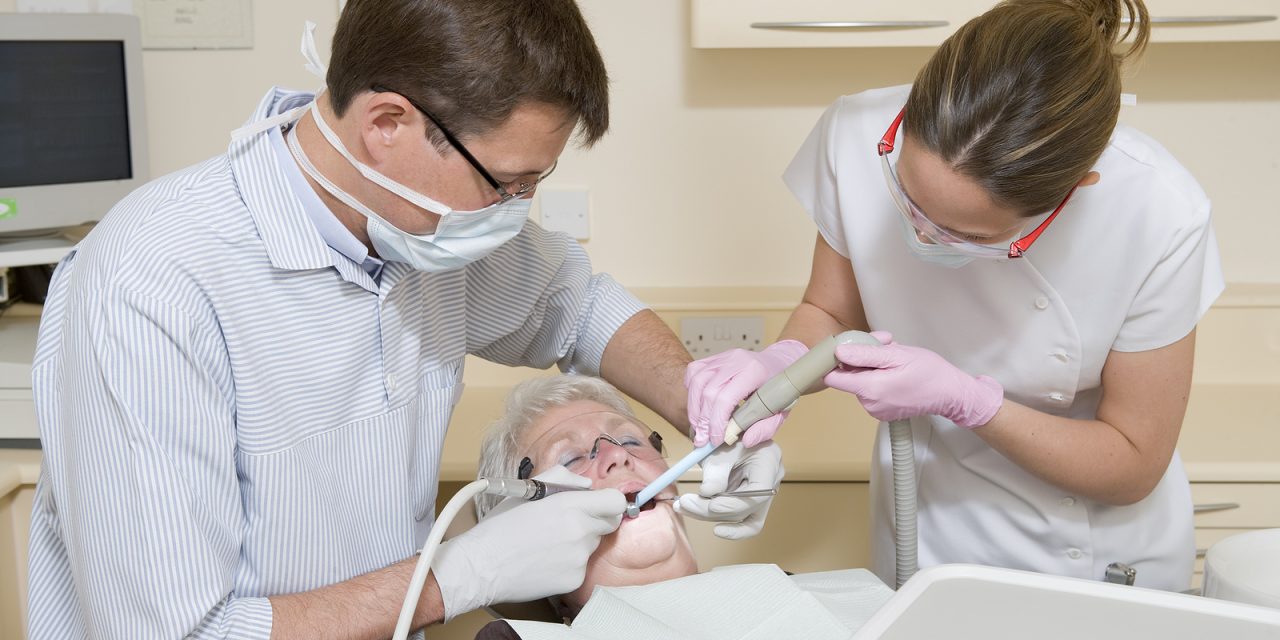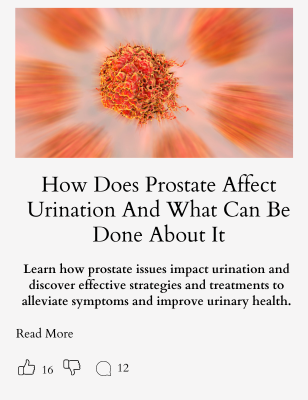Dental hygienists play a crucial role in maintaining oral health and preventing dental problems. They work alongside dentists to provide essential care and education to patients.
Dental hygienists perform teeth cleanings, preventive treatments, and oral health screenings to help patients achieve and maintain optimal oral health.
These dedicated professionals use specialized tools to remove plaque and tartar from teeth, apply fluoride treatments, and take dental x-rays. They also educate patients on proper brushing and flossing techniques, as well as the importance of good nutrition for oral health.
To become a dental hygienist, one typically needs to complete an associate degree program and obtain state licensure. This career path offers opportunities for growth and specialization in various areas of dental care.
Key Takeaways
- Dental hygienists clean teeth, perform preventive treatments, and conduct oral health screenings
- They educate patients on proper oral hygiene techniques and nutrition
- Becoming a dental hygienist requires an associate degree and state licensure
The Role of a Dental Hygienist
Dental hygienists play a crucial part in maintaining patients’ oral health. They perform various tasks to prevent and treat dental issues, working alongside dentists to provide comprehensive care.
Conducting Oral Health Assessments
Dental hygienists start by evaluating patients’ oral health. They examine teeth, gums, and other oral tissues for signs of disease or abnormalities. This includes checking for cavities, gum inflammation, and oral cancer.
They also review patients’ medical histories to identify any conditions that might affect dental treatment. During assessments, hygienists may use special tools to measure gum pockets and check for periodontal disease.
Hygienists document their findings and share them with dentists. This helps create personalized treatment plans for each patient.
Performing Dental Cleanings and Preventive Care
A key role of dental hygienists is performing professional teeth cleanings. They use specialized instruments to remove plaque and tartar from tooth surfaces, between teeth, and below the gum line.
After cleaning, hygienists polish teeth to remove stains and smooth the surface. They may also apply fluoride treatments or dental sealants to help prevent cavities.
Hygienists educate patients on proper oral hygiene techniques. They demonstrate correct brushing and flossing methods and offer advice on diet and lifestyle choices that affect oral health.
Taking Dental X-rays and Administering Local Anesthesia
Dental hygienists often take and develop dental x-rays. These images help detect issues not visible during a regular exam, such as decay between teeth or problems with jaw alignment.
In many states, hygienists can administer local anesthesia. This helps numb specific areas of the mouth before dental procedures, making treatments more comfortable for patients.
Hygienists ensure proper positioning and protection during x-rays. They also explain the process to patients and address any concerns about radiation exposure.
Educational Path and Requirements
Becoming a dental hygienist requires specific education and licensing. The process involves completing an accredited program, passing national exams, and obtaining state licensure.
Accredited Dental Hygiene Programs
Dental hygiene programs typically offer associate degrees, which take about two years to complete. Some schools also provide bachelor’s and master’s degree options for those seeking advanced roles.
Accredited programs cover topics like:
- Oral anatomy
- Dental radiography
- Periodontics
- Clinical dental hygiene
Students gain hands-on experience through supervised clinical practice. They learn to use dental tools, take x-rays, and provide patient education.
National Board Dental Hygiene Examination and Clinical Exam
After completing their education, aspiring dental hygienists must pass two important exams:
- The National Board Dental Hygiene Examination (NBDHE)
- A clinical exam
The NBDHE is a written test that assesses knowledge of dental hygiene practices and theories. It covers subjects like patient care, dental sciences, and community health.
The clinical exam evaluates practical skills. Candidates perform procedures on patients to demonstrate their abilities. This exam may vary by state or region.
State Licensure Process
Each state has its own licensing requirements for dental hygienists. Common steps include:
- Graduating from an accredited program
- Passing the NBDHE and clinical exam
- Submitting an application to the state dental board
- Paying required fees
Some states may have additional requirements, such as background checks or CPR certification. Licensed dental hygienists must complete continuing education courses to maintain their license.
Core Skills and Qualities
Dental hygienists need a mix of technical and people skills to do their job well. They must be good at talking to patients, have steady hands, and care about helping others.
Communication and Interpersonal Skills
Dental hygienists talk to patients all day long. They need to explain treatments clearly and make people feel at ease. Good hygienists listen well and answer questions patiently.
They also work closely with dentists and other staff. Being a team player is key. Hygienists should be friendly and professional with everyone in the office.
Strong communication helps hygienists teach patients about oral health. They give tips on brushing, flossing, and diet. Clear instructions help patients take better care of their teeth at home.
Attention to Detail and Fine Motor Skill
Dental work requires precision. Hygienists must spot small issues in teeth and gums. They use tiny tools to clean and treat sensitive areas of the mouth.
Fine motor skills are crucial for tasks like:
- Removing plaque and tartar
- Polishing teeth
- Taking x-rays
- Applying sealants
Hygienists must work carefully to avoid hurting patients. They also keep detailed records of each patient’s oral health.
Compassion as Health Care Professional
Many people feel nervous at the dentist. A good hygienist is empathetic and kind. They put patients at ease and make dental visits less stressful.
Hygienists should be patient with those who struggle to care for their teeth. They offer support and encouragement, not judgment.
Compassion also means being gentle during treatments. Hygienists must balance thoroughness with comfort. They aim to clean teeth well without causing pain.
Patient Interaction and Education
Dental hygienists play a crucial role in patient care through education and treatment planning. They teach patients proper oral hygiene techniques and create personalized plans to improve dental health.
Creating Treatment Plans
Dental hygienists gather important information for comprehensive evaluations. They assess each patient’s oral health needs and develop tailored treatment plans. These plans may include:
- Regular cleanings
- Fluoride treatments
- Sealants
- Periodontal therapy
Hygienists explain the recommended treatments to patients in simple terms. They discuss the benefits and address any concerns. This helps patients understand their oral health status and make informed decisions about their care.
Teaching Flossing Techniques and Oral Hygiene
Dental hygienists educate patients on proper oral hygiene practices. They demonstrate correct brushing and flossing techniques using models or in-mouth demonstrations.
Key topics covered include:
- Proper brushing technique and duration
- Correct flossing method
- Use of interdental cleaners
- Importance of regular dental check-ups
Hygienists tailor their instructions to each patient’s needs and abilities. They may recommend specific products or tools to improve home care. Follow-up appointments allow hygienists to check progress and reinforce good habits.
Specialized Dental Treatments
Dental hygienists perform specialized treatments to prevent decay and address gum issues. These targeted procedures help maintain oral health and stop problems before they worsen.
Fluoride Treatments and Sealants
Fluoride treatments strengthen tooth enamel, making it more resistant to decay. Hygienists apply a fluoride gel or foam to the teeth using a tray or brush. This quick process takes just a few minutes.
Dental sealants are thin coatings painted on the chewing surfaces of back teeth. They seal off grooves where bacteria can hide. Sealants prevent cavities and are especially helpful for children and teens.
Both fluoride and sealants are painless procedures. They offer extra protection against tooth decay beyond regular brushing and flossing.
Root Planing and Periodontal Therapy
For patients with gum disease, hygienists perform scaling and root planing. This deep cleaning removes plaque and tartar below the gum line. It smooths rough spots on tooth roots where bacteria gather.
Root planing may require local anesthesia for comfort. The procedure often takes multiple visits to complete. Afterward, patients need careful home care to help gums heal.
Periodontal therapy includes ongoing treatments to manage gum disease. Hygienists may apply antibiotic gels or do frequent cleanings. They teach patients proper brushing and flossing techniques to keep gums healthy.
Dental Hygiene and Public Health
Dental hygienists play a vital role in improving community oral health. They work in various settings to provide preventive care and education to diverse populations.
Community Oral Health Programs
Dental hygienists often take part in public health initiatives to bring affordable care to those in need. They may work as administrators, clinicians, or volunteers in these programs.
Some hygienists focus on preventive dental care in schools, nursing homes, or community centers. They perform dental screenings, apply fluoride treatments, and teach proper oral hygiene techniques.
Public health dental hygienists also create and run oral health education programs. These may target specific groups like children, seniors, or underserved communities.
In some states, hygienists can practice independently in public health settings. This allows them to reach more patients and provide care in areas with limited access to dental services.
Dental hygienists in public health often collaborate with other healthcare professionals. Together, they address the links between oral health and overall wellness.
Employment Opportunities and Job Outlook
Dental hygienists have strong job prospects with above-average growth expected.
Their work environments and career paths offer variety and opportunities for advancement.
Work Environment in Dental Offices
Dental hygienists typically work in clean, well-lit dental offices. They spend most of their time on their feet, working closely with patients and dentists.
Many dental hygienists work part-time, which allows for flexible schedules.
The job involves using specialized tools and technology to clean teeth and educate patients on oral health. Hygienists wear protective gear like gloves, masks, and safety glasses to prevent exposure to infectious diseases.
Dental offices range from small private practices to large group practices or clinics. Some hygienists work in multiple offices to increase their hours and income.
Career Growth and Education Opportunities
Dental hygienists have good career growth prospects. The field is expected to grow 9% from 2023 to 2033, faster than average. This growth will create about 16,400 job openings each year.
To become a dental hygienist, one must complete an accredited dental hygiene program. These programs usually take 3 years and result in an associate’s degree.
Some universities offer bachelor’s and master’s degree programs for those seeking advanced roles.
Continuing education is important in this field. Hygienists can pursue specializations in areas like:
- Public health
- Education
- Research
- Clinical practice
These specializations can lead to roles in dental product sales, teaching, or public health programs.
Financial Considerations
Dental hygienists can expect a range of salaries and wage trends in their profession. Pay varies based on location, experience, and workplace setting.
Dental Hygienist Salary Expectations
Dental hygienist salaries can be quite competitive. The average annual wage for dental hygienists in the United States is around $77,000. Entry-level positions typically start at $60,000 per year.
Experienced hygienists can earn over $100,000 annually. Factors affecting pay include:
- Geographic location
- Years of experience
- Type of dental practice
- Education level
- Specializations
Some dental offices offer production-based compensation. This can include a base salary plus commission on services performed above a set goal.
Trends and Wage for Dental Hygienists
The demand for dental hygienists continues to grow. This trend is expected to lead to stable or increasing wages in coming years.
Many practices are moving towards flexible compensation models. These can include:
- Hourly rates
- Daily flat rates
- Base salary plus commission
- Full commission
Commission rates typically range from 25-30% of production above set goals. This allows hygienists to earn more by increasing their productivity.
Some hygienists are exploring alternative work arrangements to boost income. These include part-time work at multiple practices or temporary assignments through staffing agencies.
Continuing Education and Professional Development
Dental hygienists must stay up-to-date with the latest practices and technologies in their field. This involves meeting ongoing education requirements and exploring opportunities for career growth.
Requirements for Ongoing Licensure
Licensed dental hygienists need to complete continuing education (CE) credits to keep their licenses active. The number of required CE hours varies by state.
Many states allow up to 10 hours of home study courses. Some accept CPR recertification and practice management classes for partial credit.
Hygienists can earn CE credits through:
- Online courses
- Webinars
- Professional conferences
- In-person workshops
It’s important for hygienists to check their state’s specific rules. They should keep detailed records of completed courses to submit during license renewal.
Advancing in the Dental Hygiene Field
Dental hygienists with an associate’s degree can pursue further education to expand their career options. A bachelor’s or master’s degree in dental hygiene opens doors to teaching, research, and management roles.
Specialization areas include:
- Public health
- Education
- Dental sales
- Orthodontics
Networking and mentorship play key roles in career advancement. Professional associations offer opportunities to connect with experienced hygienists and learn about new trends in the field.
Staying current with technology and techniques helps hygienists provide the best care to patients. It also increases their value to employers and can lead to higher pay or promotions.
Common Oral Diseases and Conditions
Dental hygienists play a key role in spotting and preventing oral health issues. They look for signs of gum disease and oral cancer during routine exams and cleanings.
Identifying Gum Disease and Oral Cancer
Gum disease is a common problem that affects the tissues around teeth. Early signs include red, swollen gums that bleed easily. As it worsens, gums may pull away from teeth and form pockets.
Dental hygienists check for these signs at each visit. They measure the depth of gum pockets and look for tartar buildup. They also teach patients how to brush and floss properly to prevent gum disease.
Oral cancer screening is another vital task. Hygienists look for unusual spots or sores in the mouth. They feel for lumps or bumps on the neck, face, and inside the mouth.
Cavities are another frequent issue. Hygienists use special tools to check for soft spots on teeth. They may take X-rays to spot hidden decay. Fluoride treatments help strengthen teeth and prevent cavities.
Frequently Asked Questions
Dental hygienists play a crucial role in oral healthcare. Their duties, education, and career path are unique within the dental field.
What are the primary responsibilities of a dental hygienist?
Dental hygienists perform a wide range of treatments. They clean teeth, remove plaque and tartar, and polish teeth using special tools.
They also educate patients on proper oral hygiene practices. This includes teaching brushing and flossing techniques.
How does the role of a dental hygienist differ from that of a dental assistant?
Dental hygienists focus on preventive care and cleaning. They work directly with patients, performing cleanings and exams.
Dental assistants support dentists during procedures. They prepare equipment, take x-rays, and handle administrative tasks.
Can you explain the education and certification requirements for a dental hygienist?
Most dental hygienists need an associate degree in dental hygiene. This typically takes about three years to complete.
After graduation, they must pass written and clinical exams to get licensed. Some states may have additional requirements.
What is the typical career progression for a dental hygienist?
Many dental hygienists start in private dental practices. With experience, they may move into specialized roles or teaching positions.
Some pursue advanced degrees to become dental hygiene educators or researchers.
What are some advantages and disadvantages of pursuing a career in dental hygiene?
Advantages include good pay and flexible work hours. The median annual wage for dental hygienists was $77,090 in May 2020.
Disadvantages may include physical strain from repetitive motions and potential exposure to infectious diseases.
How do the duties of a dental hygienist complement those of a dentist?
Dental hygienists focus on preventive care and cleaning.
This allows dentists to concentrate on more complex procedures. They also educate patients on oral health, which supports the dentist’s treatment plans.















